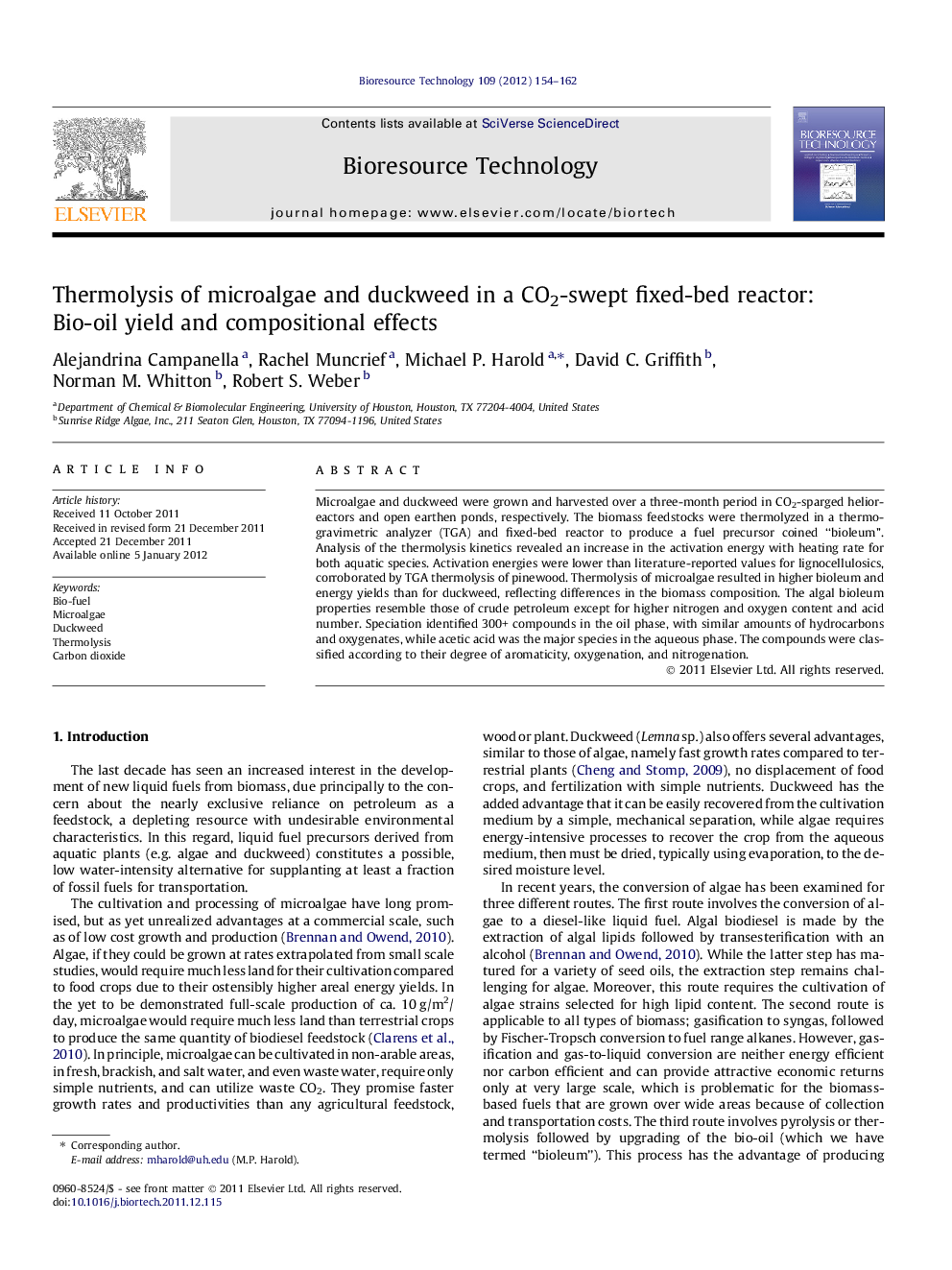| کد مقاله | کد نشریه | سال انتشار | مقاله انگلیسی | نسخه تمام متن |
|---|---|---|---|---|
| 681627 | 1460034 | 2012 | 9 صفحه PDF | دانلود رایگان |

Microalgae and duckweed were grown and harvested over a three-month period in CO2-sparged helioreactors and open earthen ponds, respectively. The biomass feedstocks were thermolyzed in a thermogravimetric analyzer (TGA) and fixed-bed reactor to produce a fuel precursor coined “bioleum”. Analysis of the thermolysis kinetics revealed an increase in the activation energy with heating rate for both aquatic species. Activation energies were lower than literature-reported values for lignocellulosics, corroborated by TGA thermolysis of pinewood. Thermolysis of microalgae resulted in higher bioleum and energy yields than for duckweed, reflecting differences in the biomass composition. The algal bioleum properties resemble those of crude petroleum except for higher nitrogen and oxygen content and acid number. Speciation identified 300+ compounds in the oil phase, with similar amounts of hydrocarbons and oxygenates, while acetic acid was the major species in the aqueous phase. The compounds were classified according to their degree of aromaticity, oxygenation, and nitrogenation.
Figure optionsDownload as PowerPoint slideHighlights
► Integrated study of microalgae and duckweed thermolysis.
► Bio-oil yield and energy content reflect differences in biomass composition.
► Algal and lemna bio-oil compares favorably to lignocellulosic bio-oil.
► Microalgae and duckweed bio-oil compounds identified and classified.
Journal: Bioresource Technology - Volume 109, April 2012, Pages 154–162